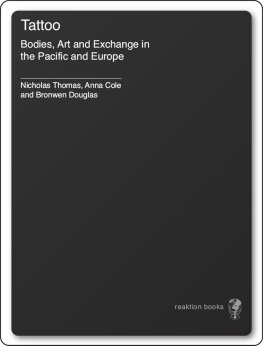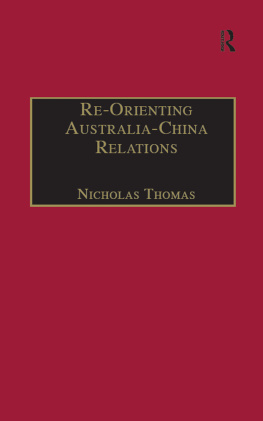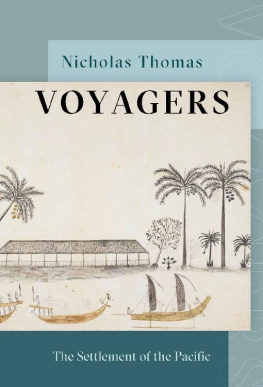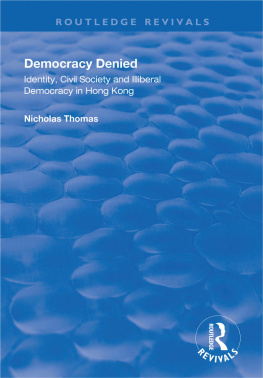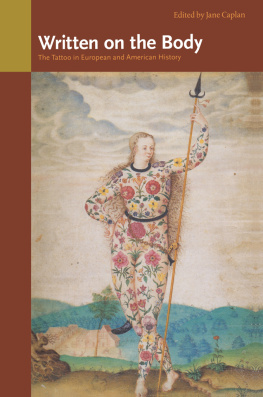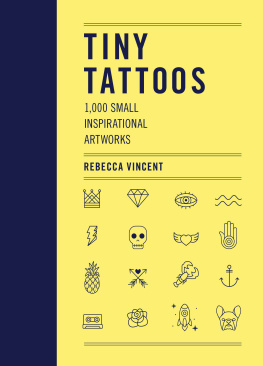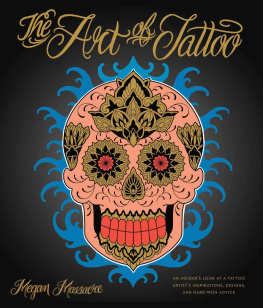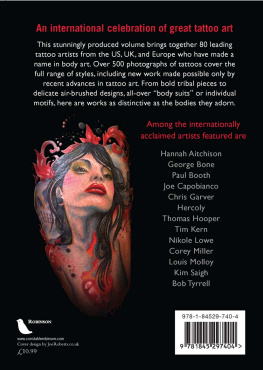No part of this publication may be reproduced, stored in a retrieval system, or transmitted, in any form or by any means, electronic, mechanical, photocopying, recording or otherwise, without the prior permission of the publishers.
Introduction
Nicholas Thomas
It is commonly stated, in works by academics and tattoo enthusiasts alike, that modern Western tattooing originates in Polynesia, with the exploratory voyages of Captain James Cook and his encounters with tribal tattooing in the South Pacific, as, for example, the sociologist Clinton Sanders put it. So, just what kind of beginning was it that modern tattooing had in the meetings between late eighteenth-century mariners and Polynesians such as Tahitians and Maori? Was this a beginning at all, or really rather a moment of stimulation, that saw an external influence reinvigorating a marginal or latent aspect of the culture of the body in Europe? Is tattoo imported tatau, or another kind of practice that has fortuitously acquired an Oceanic name?
These questions are historical in the sense that they raise issues of how we interpret facts and relationships in the past. But they are not merely historical, because there is a prominent dynamic in contemporary tattoo culture that recapitulates this moment of so-called origin. In the late eighteenth and early nineteenth centuries a considerable number of European seamen, and some other travellers, were tattooed by Tahitian, Marquesan, Maori, Samoan and other Pacific tattooists. It was these sailors adoption of this form of body modification that sparked off a much wider tattoo fashion among mariners generally, which subsequently spread beyond maritime populations or so the received story goes. Since the 1980s a highly visible and much-discussed else altogether? Is this new interaction merely resonant of what took place during the late eighteenth century, or is it more fundamentally analogous? Either way, what does the process that links tatau and tattoo tell us about cross cultural meetings, relationships and body modifications?
It is this books ambition to respond to these larger questions. But we cannot interpret the Pacific-European exchanges without first documenting them, at least without documenting them more fully and critically than has been attempted so far. Both the fact of modern tattooings origins in Pacific encounters and the Pacific tattoo traditions themselves are known to contemporary tattoo milieux, and also generally to scholars, through spectacular instances rather than contextualized histories. It is no doubt in the nature of tattooing that this should be the case. Tattoos, and especially the sorts of tattoos we consider here, are spectacular. In a way, they positively invite decontextualization. Tatau first appealed to Europeans as a curiosity, a singular and extraordinary thing, and many people still respond to tattooing in this way. So it is unsurprising that Maori ta moko is recognized above all through Sydney Parkinsons arresting sketches of Maori men, encountered in late 1769, during Cooks first visit to Aotearoa-New Zealand. One drawing in particular provided the basis of a fine engraving in the official voyage publication, was re-engraved for many subsequent travel compilations and popular encyclopaedias, and further republished in innumerable modern works on Cook, the Pacific, tattooing and Oceanic art. The Head of a New Zealander is in fact almost certainly the single most extensively reproduced image from the entire visual archive of eighteenth -century travel. Similarly, the astonishing full body tattoos of Marquesans are known above all from two early engravings based on drawings by artists on the first Russian circumnavigation, a Cook-style exploratory voyage of the first decade of the nineteenth century. These too have been widely reproduced, in contexts remote from any discussion of Marquesan societies, Marquesan art styles or Russian voyagers, still less from the individuals depicted. And the phenomenon of the white man
These now-iconic images of Pacific tattoos were produced in the context of Pacific-European interactions. Those interactions are fundamental to our understandings of Western tattooing, and the role of cross-cultural interactions in shaping or influencing European body arts over the last two hundred years, but have constituted only an obscure and unstudied backdrop to the New Zealander, the Marquesan and to Rutherford. If the pivotal importance attached to the Pacific-European Yet, in the last few years, the history of Pacific tattooing has assumed steadily greater importance for Polynesian tattooists, artists and communities; for tattoo and body modification milieux elsewhere; and for others concerned with body arts and cross-cultural histories, and their implications. For these reasons, this book attempts as it were against the archival odds to piece together a trans-cultural history of tattooing, a history of tattooing in and out of the Pacific. We examine the contexts in which Pacific tattoos were discovered by Europeans; we track the history of European tattooing in the Pacific, and Pacific tattooing as it was inflected, revalued, shaped, and often in the end suppressed, by agents of European colonization. We look at what European art has made of tattooing. We explore the contemporary manifestations of Pacific tattoo art, with particular reference to the contrasting trajectories of Samoan, Tahitian and Maori tattooing. Finally, we assess the state of play in neo-tribal tattooing today. Is this practice or set of practices merely an effect of longstanding Western primitivism, or does it mark some more consequential process of cultural exchange?
This introduction focuses on what could be seen as the nub of the debate: the question of whether, in fact, modern Western tattooing did originate, as so many have been happy to claim, in the Pacific encounter. It is the overarching theme of one of the most important recent contributions The contributors to this book would not dispute that the evidence supports neither continuity nor importation alone, but rather a process of convergence and reinforcement, and we share Caplans sense that the methodologically appropriate strategies require that we locate tattooing in terms of lateral milieux, as well as linear series; this book, in fact, tacks between the ethnographic and the historical, the linear and the lateral.
To bring up methodology is to signal that the debate turns on two, or at least two, major issues. The first is on the face of it a strictly empirical one, whether or not tattooing was prevalent in the West at the time the Pacific contacts were sup -posedly so consequential, a question I come back to shortly. The second is more theoretical. Most scholars in the humanities or social sciences today would surely be more bemused than engaged by discussion around the origins of any practice or institution. Does not the commonsense post -modernism that has become all but axiomatic warn us that any question framed in this way belongs more to a domain of myth-making than one of critical history? Is any such enquiry not, in other words, tainted by some sort of essentialism?

